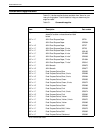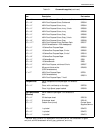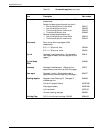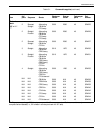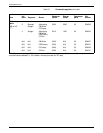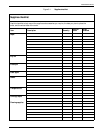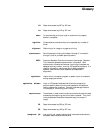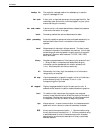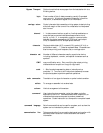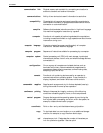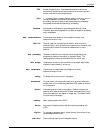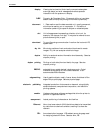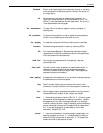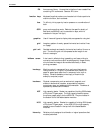
GLOSSARY
GLOSSARY-2 XEROX 4635 LASER PRINTING SYSTEM INSTALLATION PLANNING GUIDE
backup file File copied to a storage medium for safekeeping in case the
original is damaged or lost.
bar code A font, form, or logo that serves as a unique page identifier. Bar
codes help track and monitor individual pages in a given job to
ensure that they print correctly.
bar code reader A device which, with associated software, detects the presence
of bar code information on a page.
batch Processing method that accumulates execution tasks.
batch processing Allows for repetitive operations to be performed sequentially on
batched data without much involvement of the computer
operator.
baud Measurement of data rate in bits per second. This term is used
to describe information flow between two devices. Unit of data
transmitting and receiving speed is roughly equal to a single bit
per second. Common baud rates are 110, 300, 1200, 2400,
4800, and 9600.
binary Numbering system based on 2 that uses only the symbols 0 and
1. Binary is used in computers and related devices since
information can be represented with electric pulses (0=off,
1=on). Most computer calculations are binary.
bit Abbreviation for binary digit, the smallest unit of information
recognized by a computer.
bit map Visual representation of graphic images in which a bit defines a
picture element (pixel); for example, if a bit is 1, the
corresponding pixel is printed.
bit mapped Display image generated bit by bit for each point or dot. A
software-driven scanner is used to create characters or graphics.
boot To load the initial instructions of a program into computer
memory; these instructions then direct the loading of the rest of
the program. Booting may require entry of a few commands at
the keyboard or the flip of a switch to begin the process.
bps bits per second. In serial communication, the instantaneous bit
speed with which a device or channel transmits a character.
BSC binary synchronous communication. 1. Communication using
binary synchronous line discipline. 2. Uniform procedure using
a standardized set of control characters and control character
sequences for synchronous transmission of binary-coded data
between stations.



